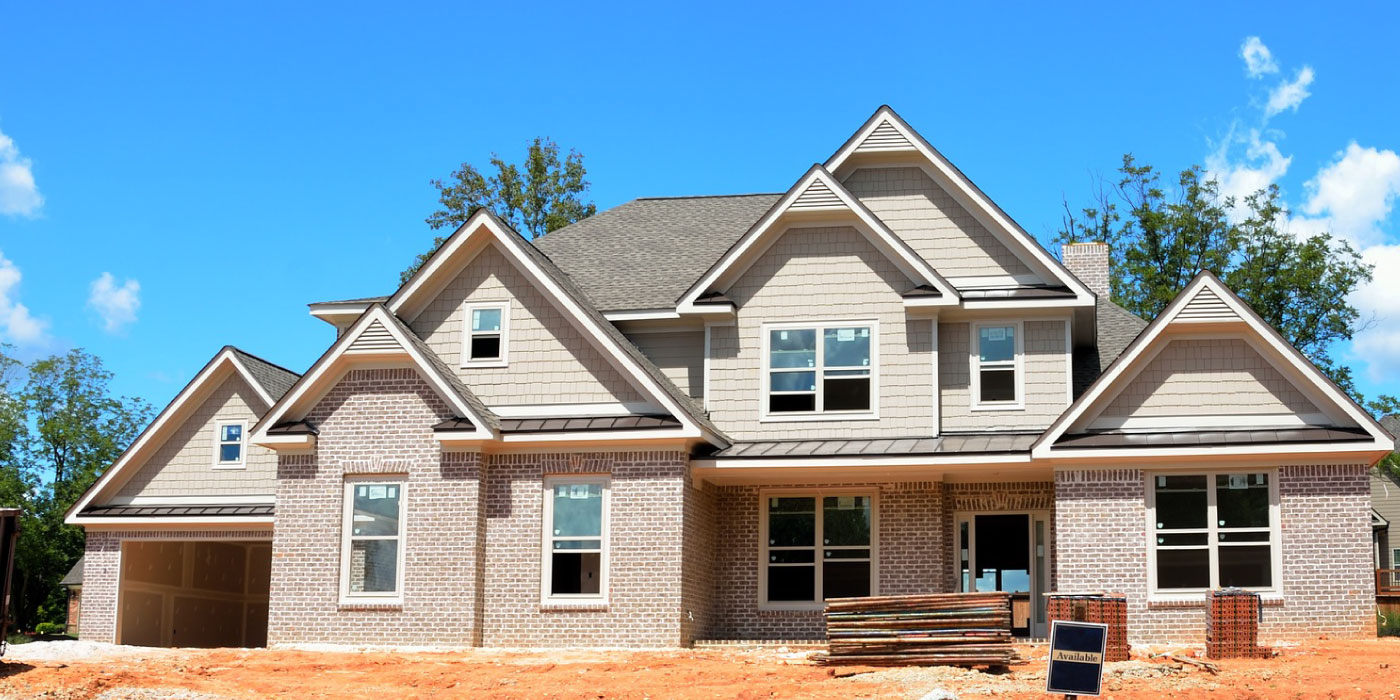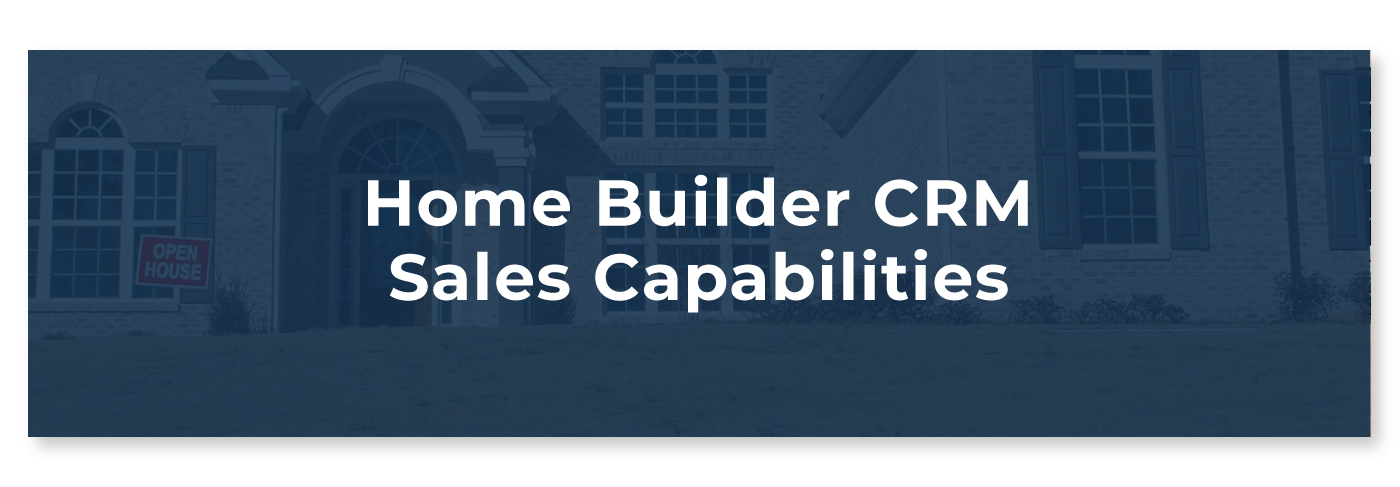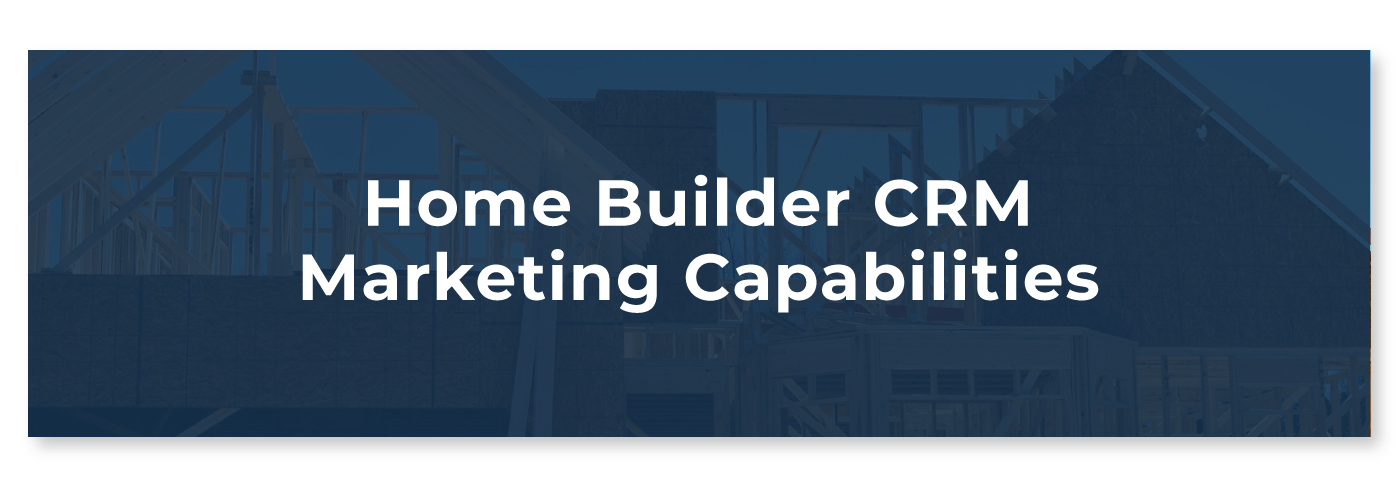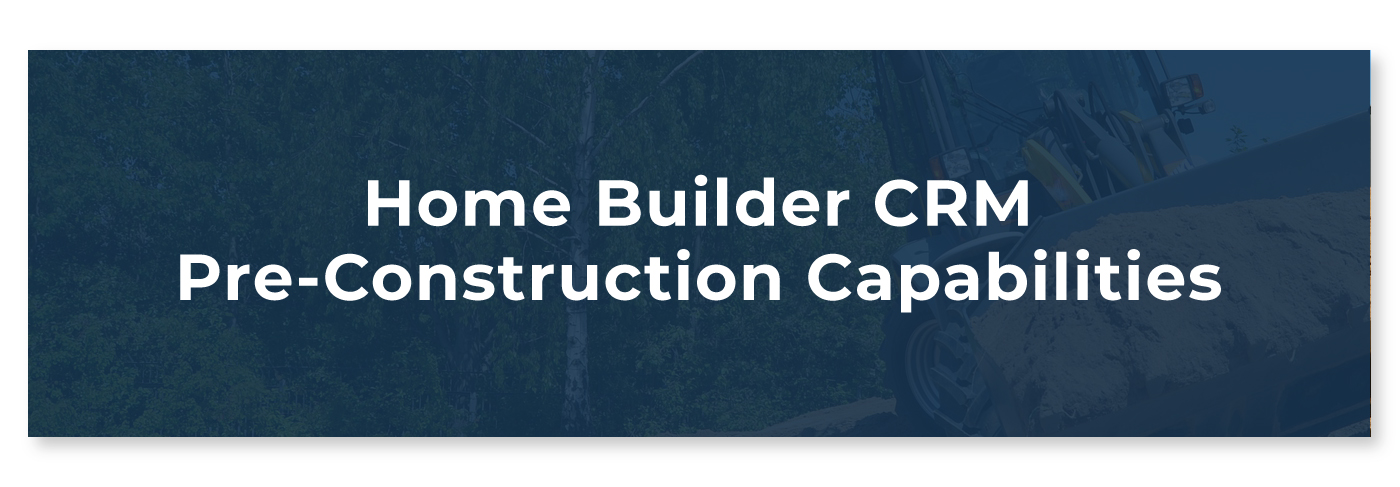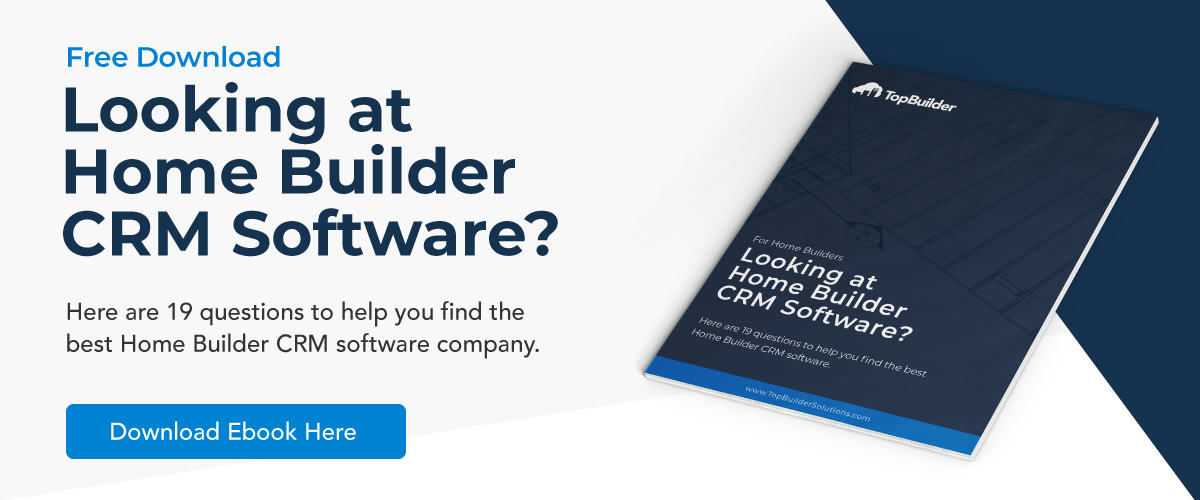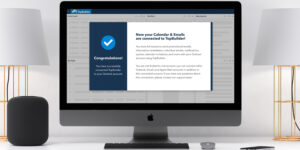A Home Builder CRM is a software system that organizes, manages, and automates home builder interactions with current and potential customers.
Like many other software tools, Home Builder CRM systems have changed drastically over time. Originally, many of these CRM software systems focused primarily on streamlining the sales process.
However, as the industry continues to evolve, so have the capabilities of CRM systems everywhere. Home Builder CRM systems were no exception and now focus heavily on managing online leads and offering efficient marketing capabilities to help you sell more homes quickly.
–
Who benefits from a Home Builder CRM?
Shockingly, Home Builder CRM systems can help more than just home builders.
Due to their advanced features, Home Builder CRM systems can be used to help anyone involved in the sale of a home, including new home sales agents, REALTORS, Online Sales Counselors, developers, home builders, and more. Regardless of the title, Home Builder CRM systems are built to help new home sales.
For everyone in the industry, you know the difficulty of selling new homes quickly. It makes sense, each potential buyer is looking for a specific type of home, with specific amenities, within a certain community, and near the best school districts.
Without a Home Builder CRM, managing, tracking, and nurturing the large volume of online buyers and onsite visitors can be nearly impossible. So, if you’re looking for a software program to organize mountains of information, manage potential buyers, and help you sell more homes quickly, then a Home Builder CRM is designed for you.
–
How a Home Builder CRM can help you.
At the heart of every CRM lives the ability to collect and store information.
What makes a CRM unique is what it’s capable of doing with that information. Unfortunately, not all Home Builder CRM systems are created equal. You’ll need to pay attention to your needs and make sure they align with whichever CRM system you’re evaluating.
At a minimum, your Home Builder CRM system should offer this core functionality.
Home Builder CRM Sales Functionality:
CRM
A Home Builder CRM should help you capture, organize, and access critical data from anywhere. If used properly by your team, collaboration can increase substantially because each member of your team is sharing critical information with one another.
In other words, information about potential home buyers, customers, partners, contractors, sub-contractors, price agreements, contracts, change orders, tasks, etc. are stored in one secure location.
–
Online Sales Counselor Tools
According to recent studies, over 90% of all real estate transactions start with an online search. When a customer contacts you, you must respond as quickly as possible, provide the information they’re looking for, and begin developing a relationship. If a customer doesn’t hear from you right away, and if you can’t address their needs, they’ll end up doing business with someone else.
A good Home Builder CRM provides all the tools an Online Sales program needs to capture, respond, nurture, and secure an appointment with a qualified onsite agent.
–
Email Integration
CRM software systems should automate sales activity and reduce the need for any manual data entry. One major way to reduce manual data entry is to have your CRM integrate with your email platform/application.
In other words, if you email a potential home buyer from Outlook, that conversation should automatically be uploaded under that contact’s history in the CRM. That way, each of your team members can see the email correspondence and know what has been said and by whom. There is nothing worse than having multiple team members responding to one person with different or conflicting messages.
Additionally, without this email integration, your team would be required to copy and paste each email into the CRM. We all know, that just isn’t possible during a busy workday.
–
Automated Workflows
Another crucial function of any CRM is its ability to automate tasks. These are commonly referred to as workflows.
For example, with a proper workflow, you can automate what happens when a new lead comes in through your website.
–
- 1. A potential buyer fills out a contact form for additional information on your website or third-party site. This interaction will immediately upload the potential buyer’s contact information in your Home Builder CRM.
- 2. The CRM will note the lead source, and it’ll automatically assign a status.
- 3. The workflow will add this new lead to your business newsletter/email list.
- 4. The potential buyer will receive an automated email notifying them that the form was completed correctly, and they’ll be contacted soon.
- 5. A notification is sent informing the team a contact form has been completed. This automated alert can be sent to one team member or multiple team members.
- 6. This new potential buyer is assigned to a sales agent or new home counselor.
- 7. The sales agent or new home counselor will be sent task reminders to follow–up with the potential buyer.
–
It certainly doesn’t have to stop with the last step. These workflows can grow as the need arises in your company. Ideally, you would build these workflows for numerous sales and marketing activities needed by your team.
–
Content Management
With content management software, you can store, categorize, and manage reusable content and templates.
This functionality has the potential to save you and your team hours each week by helping you and your team easily grab email templates, documents, FAQ responses, images, and more with the click of a button.
If you have multiple sales agents, it can help reduce their time spent writing emails to commonly asked questions. Additionally, it ensures your team members are following the company’s communication standards.
Additionally, you can add these templates to your workflows. This feature helps if your team needs to complete documentation once a client has completed a critical step in the sales process. Simply build the workflow to send the document or checklist to the team member when they need to complete it.
–
Document Management & Storage
With document management and storage, you can keep all of your documentation in one place. In other words, you can assign your documentation to a job, lead, customer, contact, task, etc.
This helps you and your team coordinate which documentation has been completed and what hasn’t. Also, this isn’t limited to just documentation. Document management should store client documents, contracts, pricing agreements, change orders, home photos, home specs, community layouts, etc.
–
Reports & Analytics
As we all know, traffic is everything for selling new homes. Healthy traffic into your models and community leads to a steady flow of sales.
With the right sales and marketing reports, you can quickly measure the effectiveness of your sales and marketing activity. This can tell you how many online leads have been received, how many onsite visitors you had, and how many potential buyers have progressed through the sales process.
Powerful reports like these can tell you the health of your company at a glance and give you the information you need to make better business decisions.
Home Builder CRM Marketing Functionality:
Email Marketing
A Home Builder CRM would not be complete without an email marketing tool. This is important because you need to promote your inventory at the right time to the right audience. Without an email marketing tool, this task can be cumbersome and time consuming for you and your team.
Home builders commonly use email marketing tools to announce new homes, realtor events, open houses, grand openings, and community events to generate more traffic. This tool alone can significantly impact your company’s ability to push leads through the sales funnel. Without a consistent email marketing schedule, it’s easy for a potential buyer to forget about your community.
–
Newsletter Package
Newsletter functionality is similar to email marketing. However, there are a few slight differences we wanted to emphasize.
A newsletter feature is commonly a monthly mass email sent to your potential buyers. This monthly email is used to update prospects on new inventory, completed specs, new lots, new pricing, and helpful content.
This newsletter functionality is a great way to keep your company and community top of mind to all of your prospects.
–
Lead Capture Tools
Lead capture tools are used to automatically add new leads to your Home Builder CRM. In other words, if someone completes a contact form on your website or a third-party source, your lead capture tools will automatically upload that new contact into your CRM.
This feature commonly kicks off a new lead workflow to notify your team and send automated email responses to the new potential home buyer.
Additionally, these tools commonly integrate with popular third-party resources. For home builders, these tools can help you collect, organize, and manage leads from online platforms such as Zillow, Trulia, Realtor.com, BDX (New Home Source), and many more.
–
Website Tracking
Website tracking features are used to help you and your team know which potential buyers are returning to your website.
Once a potential home buyer has filled out a contact form, you can follow their activity on your website. This functionality can tell you which pages they’ve visited, how much time they’ve spent on those pages, and which content interests them the most.
This functionality also has the ability to notify you when key prospects are visiting your website. Giving your sales agents an insight into who’s the most interested and who they should be contacting.
Home Builder Pre-construction Functionality:
Pricing & Contracts
Pricing & contracts functionality helps your company build professional price agreements, contracts, and change orders.
This feature has the ability to drastically increase your productivity and efficiency because you can duplicate documentation for similar homes in your community.
Have a potential buyer that wants to replicate a model home but add their own upgrades? No problem, simply select that specific model, add the adjustments, add the quantity, add in the additional work hours, and you’re done.
Once the price agreement has been complete, you can send it to the client for an electronic signature. Once sent to the client, your Home Builder CRM will notify you when the potential buyer opens the document and when it’s been signed.
How to find the best Home Builder CRM.
We recommend you start by documenting your company’s needs, what you’re trying to accomplish, the software budget, and the timeframe for implementation. These are commonly the first details a software provider will need to know.
Now, we recommend you have a few questions of your own when speaking to a sales representative. These aren’t the only questions you should ask, but they’ll get you going in the right direction.
–
What is the set-up or on-boarding process?
Each company has its own unique on-boarding process. The onboarding processes can take anywhere from a few weeks to a few months. Be cautious if the software provider expects you to do most of the work, this could be an indicator of a slow onboarding process.
–
How is my individual and company data protected?
Every Home Builder CRM will collect information and data about you and your contacts. It’s important for you to know how your data is protected in the event of a system failure.
Additionally, it’s important to blatantly ask if they share or sell your information. If you feel uncertain about their answer, you can always ask for their privacy policy and terms of services. This documentation should outline exactly what they can do with your information and data.
–
What are your training and support policies?
You and your team will need to learn the new Home Builder CRM and its features. This can take months, especially if you’re a growing company adding new employees.
It’s important to note how they offer training, when training is available, and which training comes to you at an expense.
Additionally, be sure to ask them how they handle support tickets. The software provider should have a documented system in place for critical issues, important issues, and moderate issues.
Again, these are just a few questions you should be asking when evaluating any construction software system. If you want to see our full list of recommended questions, you can access our free download here.
–
Final Comments
A Home Builder CRM is an incredible software system. It offers multiple features to help your sales teams, marketing teams, and project management teams.
If you’re actively looking for a Home Builder CRM, use this article to help you document which features are critical to your business.
Again, the goal of any Home Builder CRM is to increase new home sales. Actively look for features that help you collect, nurture, and convert prospects into new home buyers.
If you’re looking for a software system to utilizes all of the features listed above, we invite you to explore our Home Builder CRM system. You can review TopBuilder’s software by going here.
–
